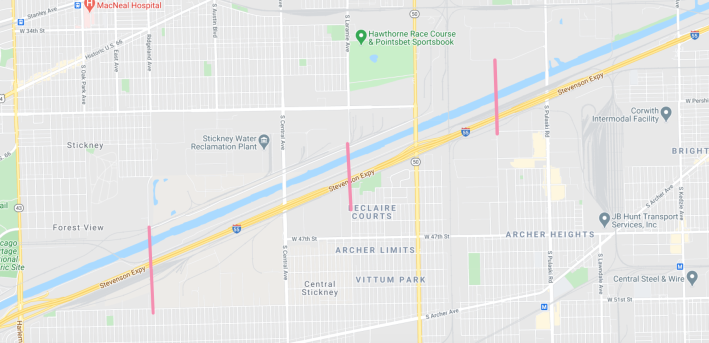In Gabe Klein’s exit interview with Chicago Mag, the outgoing transportation commissioner predicted that in the next few years, cities will be paying more attention to the correlation between lawbreaking by drivers and other kinds of crime.

“I think it’s a broken windows effect,” Klein said. “If you get control of the traffic crime, I think it can go a long way.”
He’s seen it in Chicago: “that correlation where you have people speeding, running stop signs, drunk driving, where you also have rape and muggings and murders.”
Former (and possibly future) NYPD Commissioner Bill Bratton recently alluded to a “broken windows” effect by which traffic crime begets traffic crime. But Klein’s point is more intriguing, and leads to a world of solutions that can solve so much of what ails our cities.
In neighborhood consultations, when advocates ask residents what troubles them about their block, they often get a mix of answers, interlacing safety concerns about speeding cars with their fears about other types of violence. Livable streets advocates can try to address traffic safety by slowing traffic and allocating more street space to bikes and pedestrians, but residents still won’t let their kids walk to school by themselves because traffic calming by itself doesn’t address the problem of the thugs on the corner.
Or does it?
The federal government is betting that it does. U.S. DOT’s National Highway Traffic Safety Administration has partnered with the Department of Justice to study the link between traffic violence and other kinds of violence and crime. “Traditionally, criminal activity gets much of the focus of law enforcement agencies, while traffic safety issues often remain secondary,” wrote DOJ’s James Burch and NHTSA’s Michael Geraci. “[The Data-Driven Approach to Crime and Traffic Safety] uses traffic law enforcement as a primary means to address both.”
They’re seeking to implement what they call “place-based policing,” which the Police Foundation says is more efficient and effective than traditional “person-based policing.”
The Pedestrian and Bicycle Information Center studied the correlation of traffic crime and other crime [PDF]:
Although few studies of the relationship between traffic calming and crime prevention exist, there’s growing evidence that residents in neighborhoods with slower streets are more likely to take ownership of those streets and in so doing increase the surveillance that is key to deterring crime. The concept of “eyes on the street” or “eyes on the public space,” emphasized decades ago by urbanist and author Jane Jacobs clearly applies to traffic calming. Criminals will find a fast, unpleasant street lined with garage doors an easier target than a slow, quiet street watched over by motorists and people in homes with windows, porches, or front stoops. Motorists traveling at slower speeds are more aware of their surroundings and help deter crime.
PBIC cites a 1969 study in San Francisco, conducted by UC Berkeley professor Donald Appleyard, which found "a clear correlation between traffic volumes and neighborhood residents interacting with their neighbors." Appleyard's landmark 1981 book, Livable Streets, reported that on streets with heavy traffic, "people had withdrawn from the street altogether," while residents on more lightly trafficked streets were more engaged: "children played outdoors more, and there was more ownership and awareness."
In Dayton, Ohio, residents of the Five Oaks neighborhood reduced crashes by 40 percent -- and reduced neighborhood crime by 25 to 50 percent -- by gating off their streets to motor vehicle through traffic, while allowing the free movement of people on foot or on bikes.
Traffic calming measures implemented in Palm Beach, Florida, had the auxiliary effect of solving problems the community had with drugs and prostitution. “Street crime decreased because traffic calming changed Old Northwood and Northboro Park residents’ relationship to their streets,” writes PBIC.
Landscaping and small-scale street improvements in a public housing community in Norfolk, Virginia, helped reduce crime dramatically. “Adding front porches and fences encouraged feelings of ownership; articulating entrances and re-landscaping public spaces created coherence and identity,” PBIC wrote. Police said calls dropped from 25 or 30 per day to two or three per week.
As New York and other places weigh the priority they put on traffic infractions in relation to other crimes, these are important issues to keep in mind. They might find they can kill two birds with one stone -- or hatch two birds with one egg -- by focusing on street safety.




